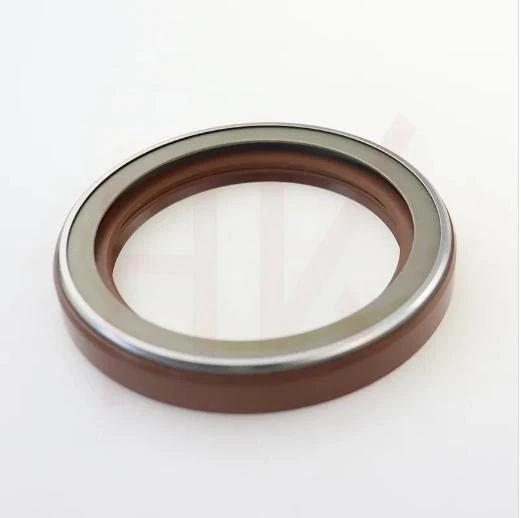joulu . 09, 2024 21:36 Back to list
Different Types of Wiper Seals and Their Applications for Various Industries
Understanding Wiper Seal Types
Wiper seals play a vital role in preventing the leakage of fluids in various machinery and automotive applications. They are utilized in hydraulic cylinders, pneumatic systems, and other applications where sealing is crucial for the proper functioning of the system. Various types of wiper seals are available, each designed to meet specific operational requirements and conditions. This article delves into the different types of wiper seals, their functions, and their applications.
What is a Wiper Seal?
A wiper seal, also known as a dust seal or scraper, is designed to prevent dirt, debris, and moisture from entering a hydraulic or pneumatic cylinder. While it mainly serves as a contamination barrier, wiper seals also play a crucial role in maintaining a stable working environment for the inner seals, extending their service life and improving the overall efficiency of the system.
Types of Wiper Seals
1. Polyurethane Wiper Seals Polyurethane is a popular material for wiper seals due to its excellent abrasion resistance and flexibility. These seals can withstand various temperatures and offer great stability under dynamic conditions. They are commonly used in applications involving heavy machinery or environments prone to dust and dirt. Polyurethane wiper seals are known for their durability, making them suitable for both hydraulic and pneumatic systems.
2. Nitrile Rubber Wiper Seals (Buna-N) Nitrile rubber, or Buna-N, is another common material for wiper seals due to its good resistance to petroleum oils and a variety of hydraulic fluids. Nitrile wiper seals are cost-effective and can operate effectively in temperatures ranging from -40°F to +250°F. They are widely used in automotive applications and are particularly effective in sealing environments with moderate contamination.
3. Viton Wiper Seals Viton, or fluorocarbon rubber, is known for its exceptional resistance to heat, chemicals, and ozone. Wiper seals made from Viton are ideal for applications exposed to harsh environments or aggressive fluids. These seals can typically operate at higher temperatures compared to other materials, making them suitable for high-performance machinery and aerospace applications.
wiper seal types

4. Silicone Wiper Seals Silicone seals are preferred for their high-temperature resistance and flexibility. These seals can endure extreme temperatures while maintaining their sealing properties. Silicone wiper seals are often used in environments that require high thermal stability, such as automotive engines and electronic devices. They tend to be less durable in abrasive conditions; thus, they are used in applications where chemical stability is a priority over abrasion.
5. PTFE Wiper Seals Polytetrafluoroethylene (PTFE) seals are known for their exceptional non-stick properties and chemical resistance. These seals are suitable for very harsh environments, including those involving strong acids and oxygen. While PTFE wiper seals may be less flexible than other materials, their longevity and resistance to wear make them an excellent choice for critical applications.
6. Metal-Clad Wiper Seals In some applications where durability is paramount, metal-clad wiper seals are employed. These seals combine a rigid backing with an elastomeric sealing lip, providing significant protection against harsh contaminants and extreme environments. They are particularly useful in industrial machinery and equipment exposed to severe conditions, such as construction or mining operations.
Applications of Wiper Seals
Wiper seals are utilized in a variety of industries, including automotive, aerospace, manufacturing, and construction. In hydraulic systems, these seals help to maintain pressure and prevent leaks, improving efficiency and reducing downtime. They also find applications in agricultural equipment, where preventing contamination can enhance performance and reliability.
In the automotive industry, wiper seals are essential during the operation of power steering gear, shock absorbers, and other critical components that require effective sealing against dirt and debris. The choice of the right wiper seal type can significantly impact the longevity and performance of the equipment.
Conclusion
Wiper seals are critical in maintaining the integrity of various mechanical systems by preventing contamination and leakage. Understanding the different types of wiper seals and their applications can aid in the selection of the right seal for specific needs. By choosing the appropriate wiper seal, manufacturers and operators can ensure the efficiency, reliability, and longevity of their machinery, ultimately leading to improved performance and reduced maintenance costs.
-
The Trans-formative Journey of Wheel Hub Oil Seals
NewsJun.06,2025
-
Graphene-Enhanced Oil Seals: Revolutionizing High-Pressure Oil Sealing
NewsJun.06,2025
-
Future of Hydraulic Sealing: Advanced Intelligent TCN Oil Seals
NewsJun.06,2025
-
Don’t Let a Broken TCV Oil Seal Ruin Your Day
NewsJun.06,2025
-
Bio-Inspired Dust Seals for Better Sealing Performance
NewsJun.06,2025
-
Biodegradable and Sustainable Hydraulic Seal Materials
NewsJun.06,2025
-
Top Oil Seal Solutions for Your Industrial Needs
NewsMay.22,2025
Products categories
















